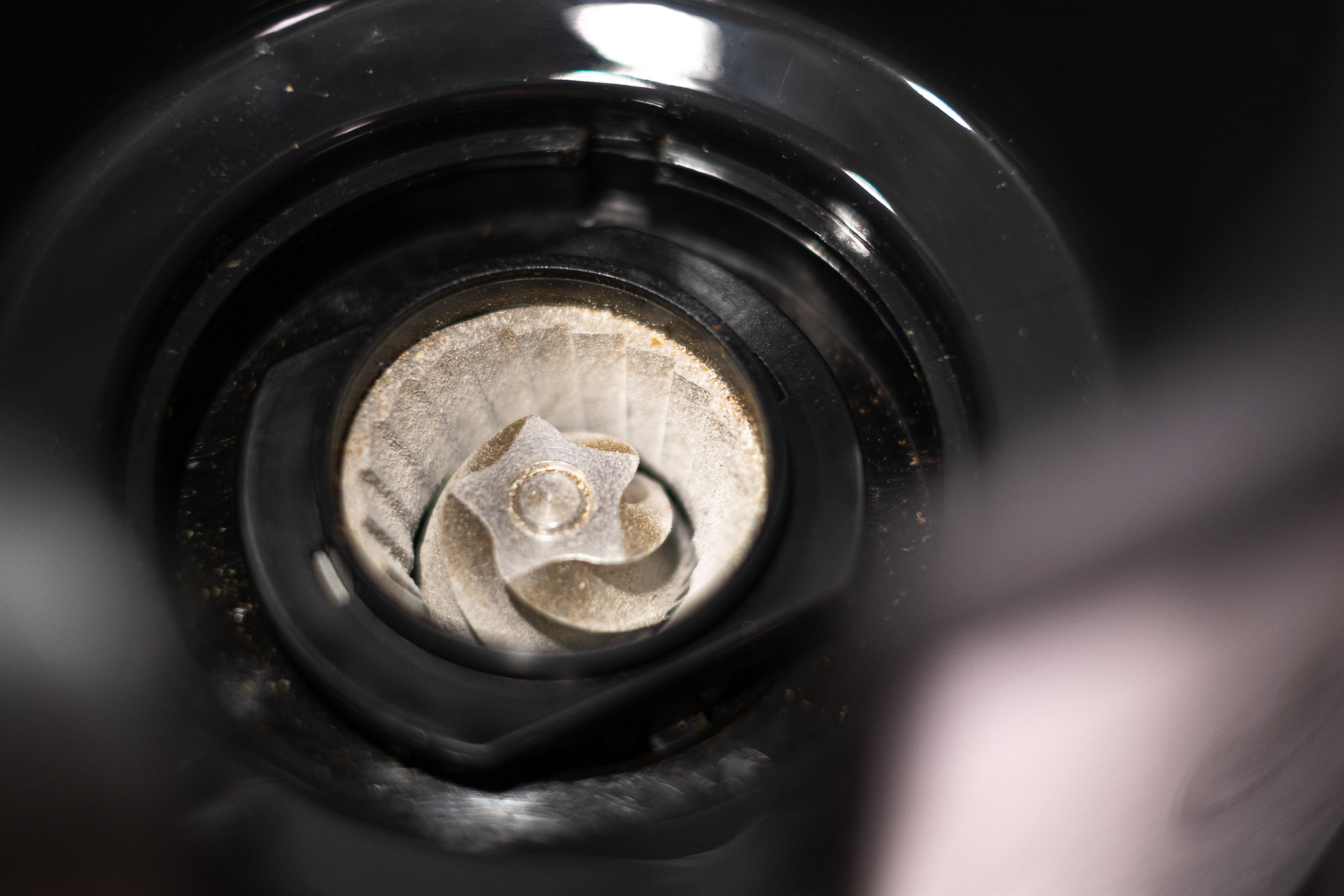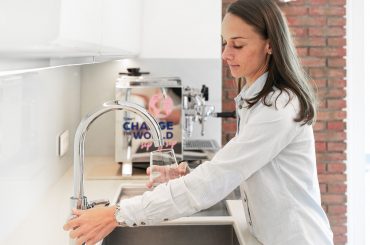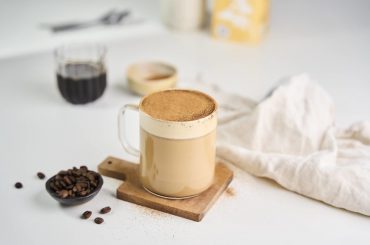Surprising as it may seem, it is the grinder and not the espresso machine that is the most important piece of equipment in every café. The quality of each espresso or drip we serve depends on how well and how fast it grinds coffee. What makes the difference between a good and a bad coffee grinder?
The Burrs are Key!
If the grinder is the most important element of coffee preparation, then the burrs are the most important element of the grinder. They are responsible for grinding coffee into small particles. Their shape, size and durability determine the quality of the grind and, in consequence, the taste of the brew. They are also an operational element that must be replaced at specific time intervals. What should you look for?
Flat or conical burrs? Honestly, it doesn’t matter so much and there is no conclusive evidence to say that one are better than the other. It’s worth mentioning, however, that in the case of conical burrs there is a risk of damaging the shaft and, consequently, destroying the whole device. This can happen when objects such as small pebbles get into the grinder together with coffee beans. Of course, flat burr grinders won’t come out completely unscathed as well, but the risk of damaging the engine is smaller
Size matters – generally, the bigger the burrs, the better. Bigger diameter increases the grinding speed and the risk of overheating coffee with large loads and fine grind decreases. Besides, grinders with large burrs usually have stronger and more durable engines, and their geometry allows for greater grinding precision. Minimal diameter of burrs for professional espresso grinders should be 65 mm.
The burrs are an operational element and must be replaced depending on the wear and tear and the material they were made of. Some burrs are covered, e.g. with a layer of titanium, which increases their lifetime twice or even three times.
Purpose: espresso or drip coffee? These two brewing methods require completely different settings of grind coarseness and, therefore, they need burrs with different characteristics. So, the grinder dedicated to espresso will not necessarily help produce delicious pour-over coffee, and the grinder dedicated to dripper or Chemex will not be able to grind as fine as it is necessary for espresso. So, you need to determine your needs first – espresso grinders are usually more expensive because they must provide great precision of the grind and durability of elements that will make their intense operation in coffee shops possible. There are devices on the market that will handle both types of the grind, both for espresso and for pour-over methods. These include:
Of course, none of these is among the cheapest in their class, but they offer versatility and high quality of the grind for every brewing method.
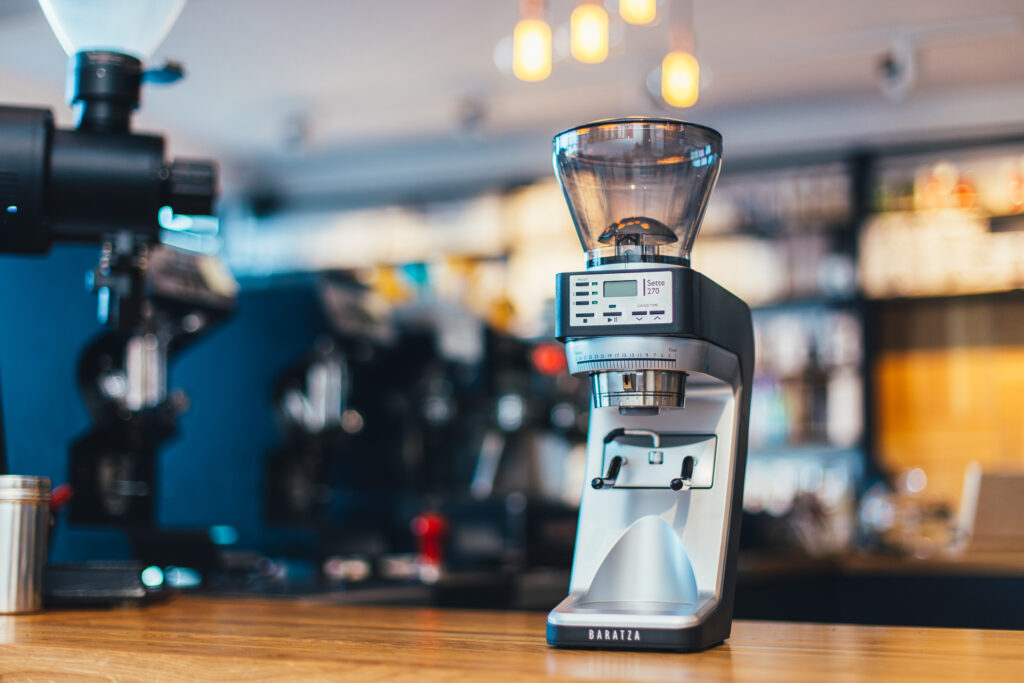
Stepless adjustment of grind size – especially important for espresso. This system (included in most professional grinders) makes it possible to set the grind size precisely. What is more, the best models on the market offer a comfortable and easy to use system of adjustment based on the auger. The regulation is smooth and the grinding parameters can be adjusted really quickly.
Programmed doses and doserless construction – every modern espresso grinder should combine these two qualities. They save a lot of money and time because coffee is dosed in a repeatable and even way every time, and, additionally, it is ground straight to the portafilter. This solution helps maintain the supreme freshness of the ground coffee and the repeatability of espresso extraction.
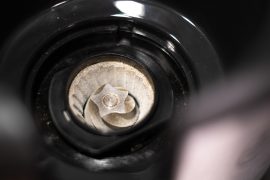
Easy access to the burrs – the grinder must be cleaned just like you clean an espresso machine or an oven. The more often and more thoroughly you do it, especially if you use darker beans, the better – both for the taste of coffee and the technical condition of the grinder. The cleaning system in all the Eureka or Baratza grinders is the same for all models in the series. It enables cleaning the inside of the grinder or changing the burrs over a few minutes, while other constructions require at least an hour to do this.
Grinding speed – the parameter mentioned before in the context of burr size. Obviously, the faster the grinder, the better. The finer the grind, the more time it takes for the grinder to deal with the same amount of coffee. In the case of espresso, the acceptable grinding times for professional use are those below 7 seconds for 15 grams of coffee. Top constructions will handle this task in slightly over 3 seconds.
Cooling of the burrs – with their great load and high grinding speeds, the espresso grinders need such an amenity. It helps to maintain even grind and low temperature of ground coffee even in the hottest moments.
Additional improvements – small additions that make life easier are, among others: regulated fork which holds the portafilter, regulation and backlit grounds bin, the system of reducing noise, availability of burrs covered with titanium or other layers which improve their durability, as well as the most innovative gadgets like built-in scales or regulation of rotation. All those elements create the final grinder, the choice of which might be easier with the table below.
| Name | Application | Burrs | Regulation | Grinding speed for 15 g (espresso) | Purpose and efficiency | Easy cleaning | Noise reduction |
| Baratza Sette 270 Wi | universal | conical, 40 mm | stepless | ok. 6 s | home/office/small foodservice business (below 1 kg per day) | YES | NO |
| Baratza Virtuoso | pour-over | conical, 40 mm | steps, 40 settings | N/A | pour-over coffees as an addition to the offer | YES | NO |
| Eureka Mignon Specialita | Espresso | flat, 55 mm | stepless | ok. 6 s | restaurants / offices / additional espresso blend (up to 1 kg per day) | YES | YES |
| Eureka Olympus 75 AP | Espresso | flat, 75 mm | stepless | ok. 3 s | café with large customer traffic (10+ kg per day) | YES | NO |
| Eureka Atom Pro | universal | flat, 75 mm | stepless | ok. 3 s | café with large customer traffic (up to 5 kg per day) | YES | YES |
| Eureka Zenith 65E | Espresso | flat, 65 mm | stepless | ok. 5,5 s | café with average customer traffic (2-3 kg per day) | YES | NO |
| Eureka Atom Specialty 65E | Espresso | flat, 65 mm | stepless | ok. 5,5 s | café with average customer traffic (2-3 kg per day) | YES | YES |
| Mahlkonig EK43(s) | universal | | stepless | ok. 2 s | café with average customer traffic (2-3 kg per day) | YES | NO |
Espresso Grinders
PLN 2,000 – 3,500
A good choice for restaurants and offices, which can also serve as an additional grinder, is Eureka Mignon Specialita – it is small, quiet, really sturdy and provides good quality of espresso. It has, however, capacity limitations, so if you use up more than 1 kg of coffee daily, a better choice will be Zenith 65E – a younger brother of Olympus, intended for more intense work.
An alternative to Zenith is Atom Specialty 65E. It has the noise reduction system and is slightly smaller. Efficiency and speed are at the same level.
About PLN 5,000
If your café needs an espresso grinder, the best choice in basically every case is Eureka Olympus – for about PLN 5,000 it offers unmatched efficiency, quality of the grind and all the solutions that make work and maintenance easier. In this price range it is difficult to find another grinder that has so much to offer.
PLN 10,000 and more
A solution for the most demanding is Nuova Simonelli Mythos ONE. This grinder is acknowledged in the world of specialty coffee, featuring 75 mm burrs covered with titanium, Clima Pro system retaining steady temperature of burrs regardless of the load. Plus, the system of adjustment and cleaning known from Eureka, as well as silencing and LED lighting. Those features make Mythos not only great in grinding, but they also make the work easier and provide repeatability in all conditions.
Grinders for Filter Coffee / Alternative Brewing
Under PLN 1,000
The best choice to start with is Baratza Virtuoso – the grind is very precise, it is easy to clean and durable. Its limitation is efficiency, so if you brew more than 1 kg of filter coffee per day, you might need something bigger and more reliable.
About PLN 5,500
Eureka Atom Pro – this grinder allows for fast and precise grinding of large amounts of coffee for every brewing method, so you can also use it as an additional grinder for espresso. It is also muted and has the Blow Up system throughout the series, which makes cleaning after every grind even easier and is very useful if there are several different coffees on your menu.
PLN 10,000 and more
Meet ‘the king of grinders’, Mahlkonig EK43. This powerful grinder is not only limitlessly efficient, but also offers unparalleled grind quality. It can serve every brewing method and any amounts of coffee. Its disadvantage, apart from the high price, is less comfortable work with espresso – it requires manual dosing of coffee every time, so we don’t recommend it as a basic espresso grinder. However, if your focus is filter coffee, definitely every barista has a crush on Mahlkonig, especially the EK43s model.

As you can see, selecting a proper grinder is neither easy nor obvious. At the very beginning you need to define what you need and then compare technical parameters of various grinders. Each producer will advertise their device as the best on the market, but the data doesn’t lie, so look for information about the purpose, burr size, adjustment type, grind speed, efficiency and cleaning. This key information will help you make a good choice. Good luck!

